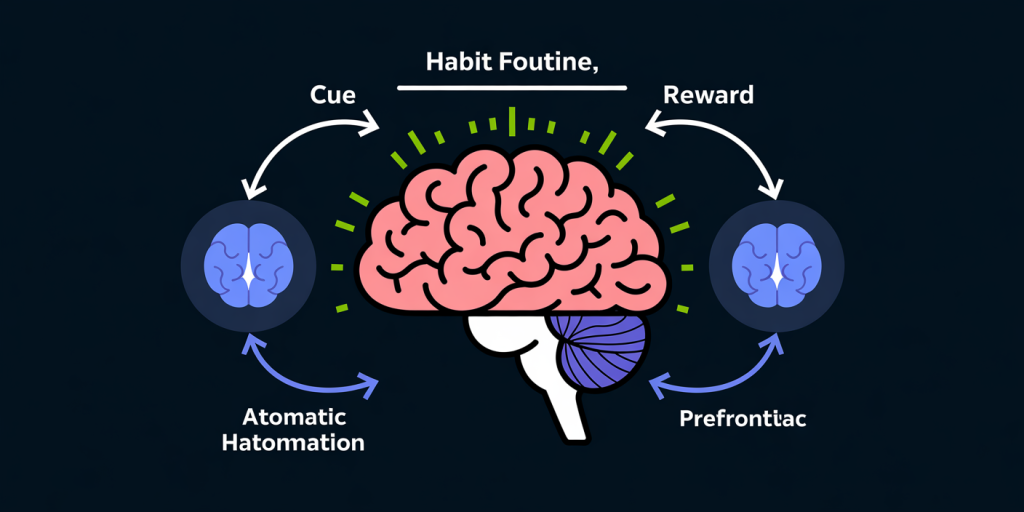Atomic Habits: How to Build Habits That Stick
In today’s fast-paced world, building habits that last has become essential for personal and professional success. Many people struggle to maintain new routines or change old behaviors, leading to frustration and stagnation. The concept of “atomic habits”—small, incremental changes—offers a pragmatic and scientifically grounded approach to habit formation. This article explores effective strategies to build habits that stick, backed by research, practical examples, and actionable techniques.
Understanding Atomic Habits and Their Impact
Atomic habits refer to tiny, consistent behavioral adjustments that accumulate over time into significant life changes. The term gained prominence through James Clear’s bestselling book *Atomic Habits*, which highlights how focusing on mini improvements each day can lead to remarkable results. Rather than aiming for drastic transformations, atomic habits emphasize the power of small actions that fit seamlessly into daily life.
Research supports this approach. According to a 2012 study published in the *European Journal of Social Psychology*, it takes an average of 66 days for a new behavior to become automatic (Lally et al., 2010). This figure varies depending on the complexity of the habit and individual factors, but the core idea is consistent: habit formation is a gradual process. Atomic habits leverage this gradual process by breaking down overwhelming goals into manageable, bite-sized actions that reduce friction and increase the likelihood of sustained behavior change.
The Science Behind Habit Formation
Habit formation occurs through a feedback loop involving cue, routine, and reward. First, a cue triggers the behavior, followed by the routine or action itself, which is then reinforced by a reward. This loop, often unconscious, solidifies over time until the habit becomes automatic.
Neurological studies show that habits are encoded in the basal ganglia—the brain region responsible for procedural learning and automatic behaviors—while decision-making areas like the prefrontal cortex relax their hold on actions once habits are established. This means that repeated behaviors require less cognitive effort, making atomic habits particularly effective. By starting small, you reduce mental resistance and build momentum as these behaviors become ingrained.

For example, someone wanting to start exercising might begin with one push-up per day rather than a full workout. This minimal routine acts as a cue and rewards intrinsic motivation by creating a sense of accomplishment without overwhelming the brain’s decision-making process. Over weeks, the habit scales up naturally.
Practical Strategies for Building Sticky Habits
To cultivate atomic habits effectively, several practical strategies can be employed. First, make the habits obvious by designing clear environmental cues. If you want to drink more water, placing a filled water bottle on your desk serves as a persistent reminder. Making cues obvious harnesses the brain’s natural inclination to respond to triggers, strengthening the habit loop.
Second, make habits attractive. Pairing a habit with something enjoyable—known as temptation bundling—increases adherence. For instance, only listen to your favorite podcast while jogging. This approach tightens the association between habit and reward.
Third, reduce friction. Simplify or remove obstacles that hinder habit completion. If your goal is to meditate daily, place your meditation mat next to your bed rather than in a closet. This convenience lowers the activation energy needed to act, boosting habit adoption.
Lastly, track progress and celebrate small wins. Monitoring behavior through apps or journals provides visual proof of consistency, which is motivating. Celebrations reinforce positive feelings linked to the habit, making recurrence more likely.
Table 1: Comparative Overview of Habit-Building Techniques
| Technique | Description | Practical Example | Benefit |
|---|---|---|---|
| Environmental Design | Making cues obvious through surroundings | Leaving workout clothes visible | Enhances triggers for automatic response |
| Temptation Bundling | Pairing habits with pleasurable activities | Listening to music while cleaning | Increases attractiveness of habits |
| Friction Reduction | Removing barriers to execution | Prepping meals in advance | Lowers resistance, facilitates action |
| Progress Tracking | Monitoring and rewarding behavior | Using a habit tracking app | Reinforces motivation through visual feedback |
Overcoming Common Obstacles in Habit Formation

Even with atomic habits, challenges frequently arise that can derail progress. Two common obstacles include lack of motivation and environmental interference. Understanding how to overcome these issues is critical for habit sustainability.
Motivation can fluctuate naturally, especially during stressful periods. However, relying solely on motivation is risky, as it is inconsistent. Instead, focus on commitment by tying habits to your identity. For example, instead of setting a goal to “run three times a week,” identify as “a runner.” This subtle change anchors the habit to self-perception, which expands intrinsic motivation and reduces reliance on fleeting willpower.
Environmental factors can sabotage habits by exposing individuals to tempting alternatives or disrupting routines. For instance, attempting to cut back on screen time while keeping a smartphone within arm’s reach can hinder goal attainment. To combat this, restructure your environment by establishing “no-phone zones” or scheduled digital detox periods. Such changes minimize temptations and support habit maintenance.
Case study: Charles Duhigg, author of *The Power of Habit*, details how Febreze struggled initially because the cue for using it (cleaning) was unclear. By clarifying the cue and reward—a fresh scent and satisfaction of cleanliness—usage increased rapidly. This highlights the importance of cue clarity for habit persistence.
Measuring Success: Data-Driven Habit Tracking
Data-driven habit tracking is an effective way to maintain momentum and identify bottlenecks. Various apps such as Habitica, Streaks, and Loop provide tools for setting goals, recording activity, and visualizing patterns over time. In a study by the University of Scranton, only 8% of people achieve their New Year’s resolutions, largely due to absence of tracking and accountability (Norcross et al., 2002).
By contrast, tracking tools can increase goal adherence by approximately 30%, according to a report by the American Psychological Association. These tools can send reminders, offer rewards, and provide social accountability, all of which reinforce habit loops.
For example, a user aiming to improve hydration might log daily water intake to monitor and improve consistency. Visualization of progress—such as streaks or charts—creates positive reinforcement through tangible evidence of improvement, increasing likelihood of habit retention.
Table 2: Impact of Habit Tracking on Goal Achievement
| Study/Report | Key Statistic | Interpretation |
|---|---|---|
| University of Scranton (2002) | 8% achieve resolutions | Low success without tracking/accountability |
| American Psychological Association (2019) | 30% improvement with tracking | Tracking enhances adherence significantly |
Future Perspectives: How Habit Science Will Evolve
As technology progresses, the science and practice of habit formation continue to evolve. Emerging innovations in wearable technology, artificial intelligence (AI), and personalized behavior analytics promise to tailor habit-building interventions more precisely.
For instance, wearable devices that monitor physiological signals can provide real-time feedback on stress or fatigue, helping users adjust their routines proactively. AI-driven habit coaches could analyze individual behavior patterns, suggest optimized habit stacking sequences, and offer customized rewards to maximize motivation.
Virtual and augmented reality may also play roles in immersive habit training environments, enabling users to simulate scenarios and practice new behaviors risk-free. Such immersive approaches could enhance learning and the automaticity of habits.

Moreover, integrating social and community aspects in habit platforms can leverage collective accountability, proven to reinforce habit adherence. Online groups and challenges create a sense of belonging and shared commitment, deepening habit sustainability.
In conclusion, atomic habits represent a powerful framework to build lasting behaviors through small, contextual adjustments. With continued advancements in technology and increasing behavioral science insights, the future holds promising opportunities for individuals to develop habits that truly stick—transforming aspirations into realities over time.
